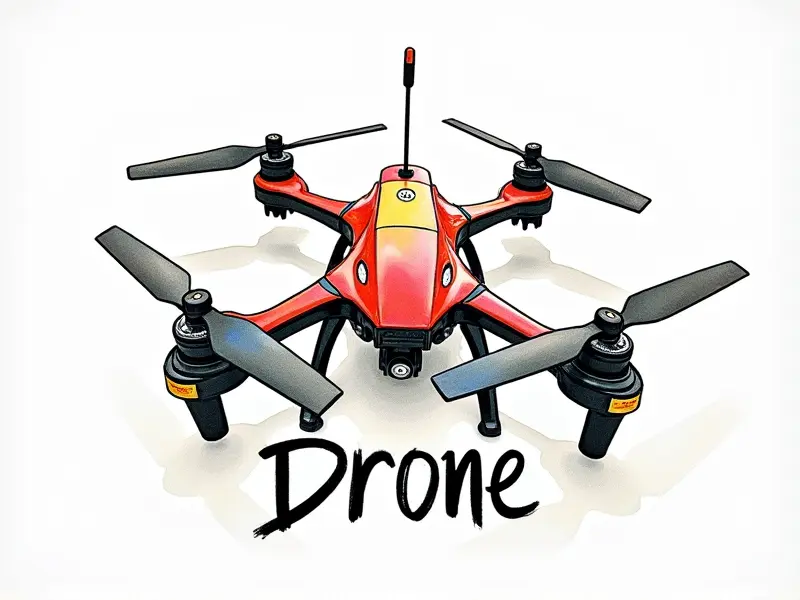Can I fly GePRC in strong winds?

Flying GePRC Drones in Strong Winds: Is It Possible?
When it comes to flying drones, one of the most critical factors to consider is the weather conditions. For enthusiasts and professionals alike, understanding how a specific drone model performs under various environmental challenges is crucial for both safety and optimal performance. This article delves into the capabilities of GePRC drones in strong winds, providing insights on stability, handling, and practical tips for flying during windy weather.
Can GePRC Handle Powerful Gales?
The robust design of GePRC drones is a testament to their ability to withstand challenging conditions. These drones are engineered with advanced aerodynamics and reinforced structures that enhance their resilience against powerful gales. However, it's essential to assess the specific model you're using, as different variants may have varying levels of wind resistance.
GePRC Stability in High Winds Revealed
One of the standout features of GePRC drones is their stability under high-wind conditions. Advanced gyroscopic systems and intelligent flight control algorithms work together to maintain steady performance, even when faced with gusty winds or sudden changes in air pressure. This ensures that pilots can navigate through strong winds without compromising on safety.
Surviving Gales with Your GePRC Drone
Flying a drone during gale-force winds requires careful preparation and adherence to best practices. Before taking off, ensure your drone is properly calibrated and all components are securely fastened. Additionally, monitor weather forecasts closely to avoid flying in conditions that exceed the recommended wind speed limits for your GePRC model.
Pre-flight Checks
- Calibration: Ensure your drone's sensors are accurately calibrated.
- Battery Check: Full charge and no signs of wear or damage.
- Propeller Inspection: Confirm that all propellers are securely attached and undamaged.
Tips for Flying GePRC in Windy Weather
To maximize the performance of your GePRC drone during windy conditions, follow these practical tips:
Select Optimal Flight Paths
- Headwind Strategy: Fly with the wind at your back to gain altitude and maintain control.
- Tailwind Caution: Be cautious when flying against a tailwind, as it can destabilize your drone.
Adjust Flight Speeds
- Slower is Safer: Reduce flight speeds to maintain better control and stability.
- Altitude Management: Fly at lower altitudes where wind conditions are typically less severe.
How Well Does GePRC Fly in Wind?
The performance of a GePRC drone in windy weather is influenced by several factors, including the model's aerodynamic design and onboard stabilization systems. Generally, newer models incorporate advanced features such as GPS-assisted flight modes and wind-compensation algorithms that significantly enhance their ability to operate effectively even under adverse conditions.
Battling the Elements with GePRC
While GePRC drones are designed to handle strong winds, it's crucial to understand their limitations. Overconfidence can lead to accidents or damage to your drone. Always refer to the manufacturer’s guidelines and adhere strictly to recommended wind speed limits for safe operation.
Manufacturer Recommendations
- Check Documentation: Review user manuals and technical specifications.
- Contact Support: Reach out to customer service if you have specific concerns or questions.
Is GePRC Suitable for Strong Winds?
The suitability of a GePRC drone for strong winds depends on the particular model and its design specifications. Some models are better equipped than others, making it important to choose wisely based on your intended use case and environmental conditions.
Selecting the Right Model
- Research: Look into reviews and user experiences of different GePRC models in windy environments.
- Contact Experts: Seek advice from experienced pilots or drone enthusiasts who have flown similar conditions.
Can You Fly GePRC During Storms?
Flying a drone during storms is generally not recommended due to the unpredictable nature of severe weather. However, if you must operate in such conditions, ensure your drone has robust protective features and follow strict safety protocols.
Safety Protocols
- Emergency Procedures: Have a clear plan for emergency landings or returns to base.
- Weather Monitoring: Use reliable weather apps and services to stay informed about changing conditions.
Navigating Gales with GePRC Drone
Flying through gales requires a combination of technical expertise, situational awareness, and adherence to safety guidelines. By understanding the capabilities and limitations of your GePRC drone, you can navigate challenging wind conditions more effectively.
Technical Expertise
- Flight Control: Master the controls for optimal maneuverability in strong winds.
- Troubleshooting: Be prepared to address potential issues that arise during flight.
GePRC Capabilities in Extreme Weather
The GePRC drone's performance in extreme weather conditions is a testament to its engineering prowess. By leveraging advanced technology and adhering to best practices, you can enhance the reliability and safety of your flights even under adverse environmental challenges.
Conclusion
In conclusion, flying a GePRC drone in strong winds is possible but requires careful planning and adherence to safety guidelines. Understanding the specific capabilities of your model, performing thorough pre-flight checks, and following practical tips can significantly enhance your ability to navigate through challenging wind conditions safely and effectively.

